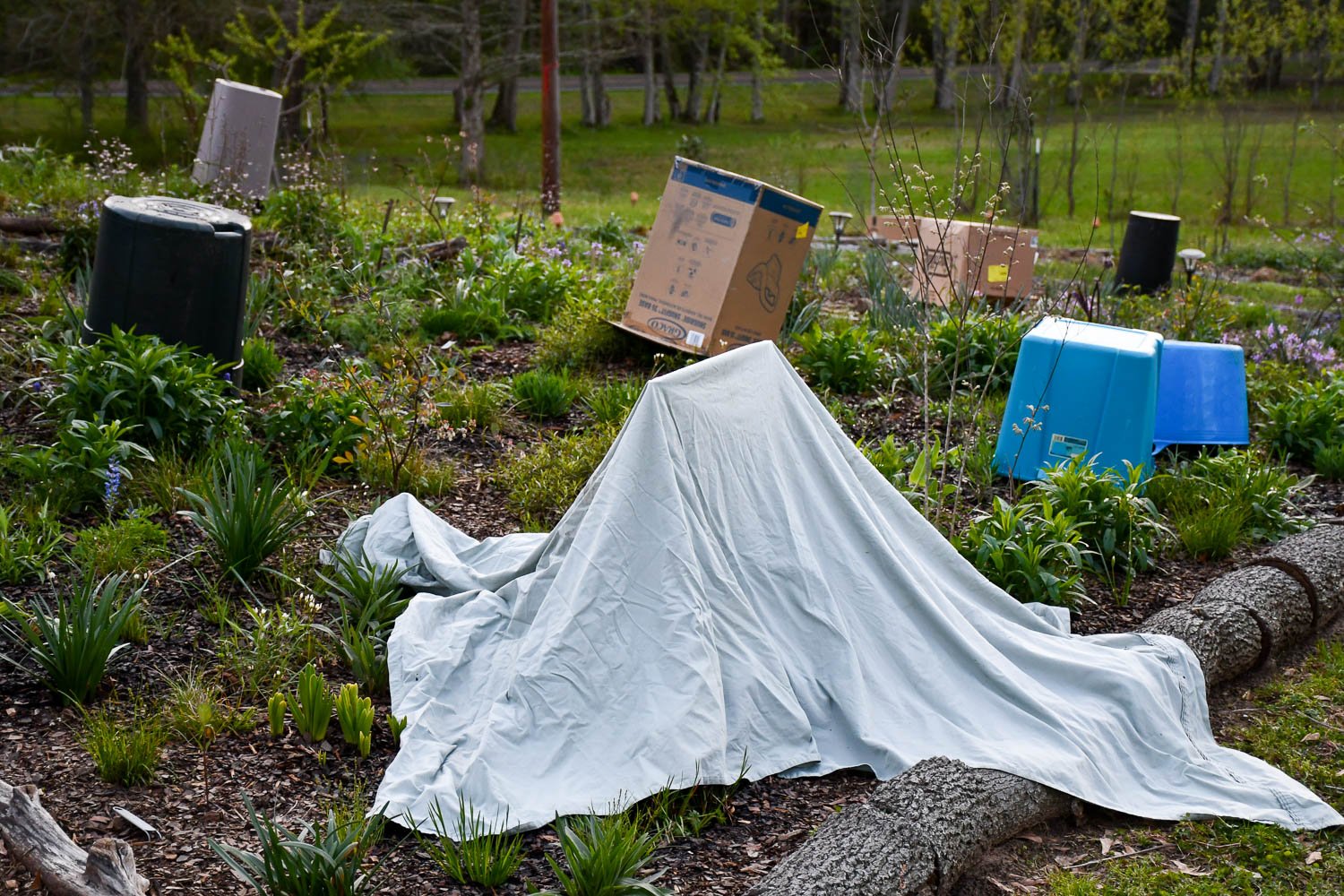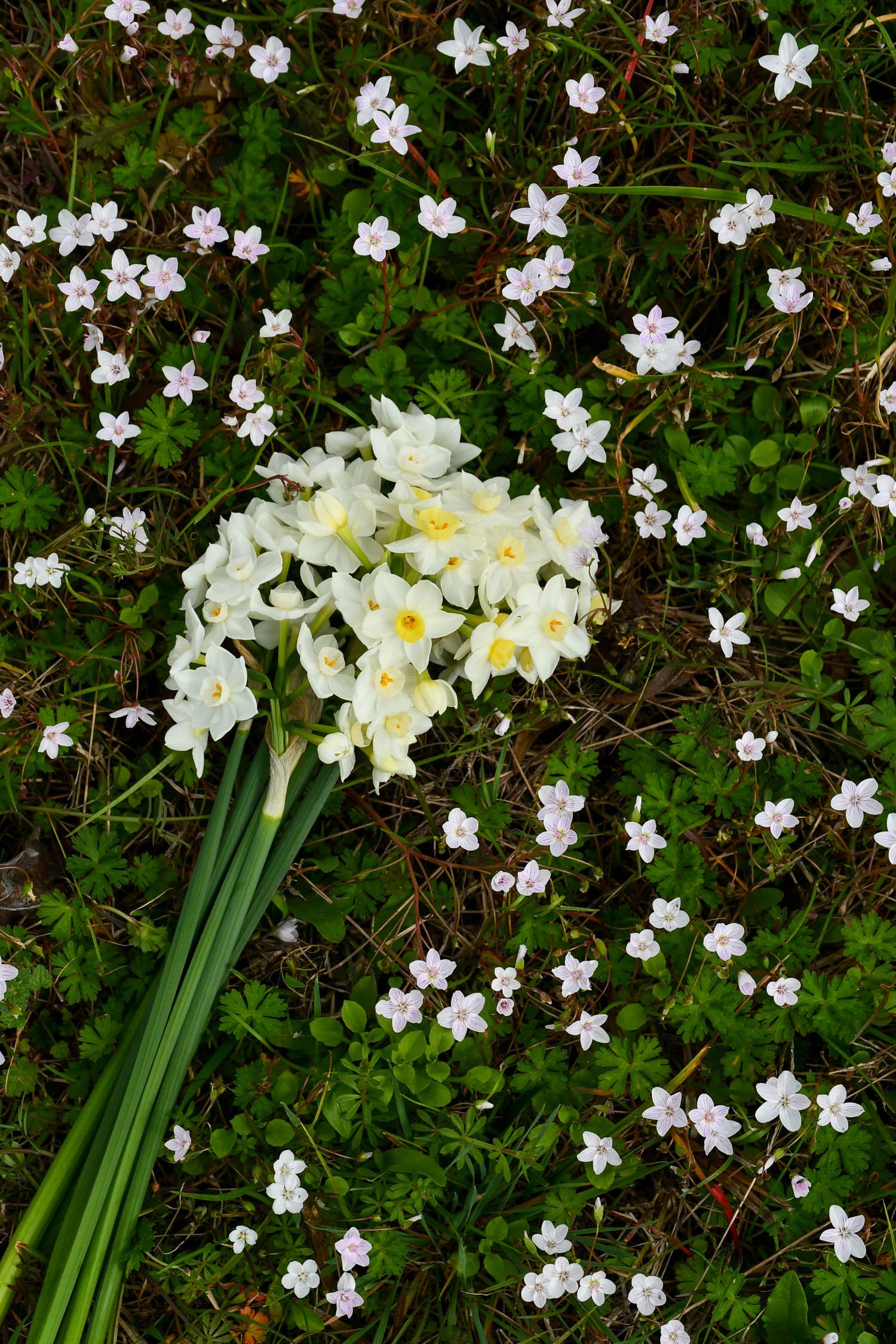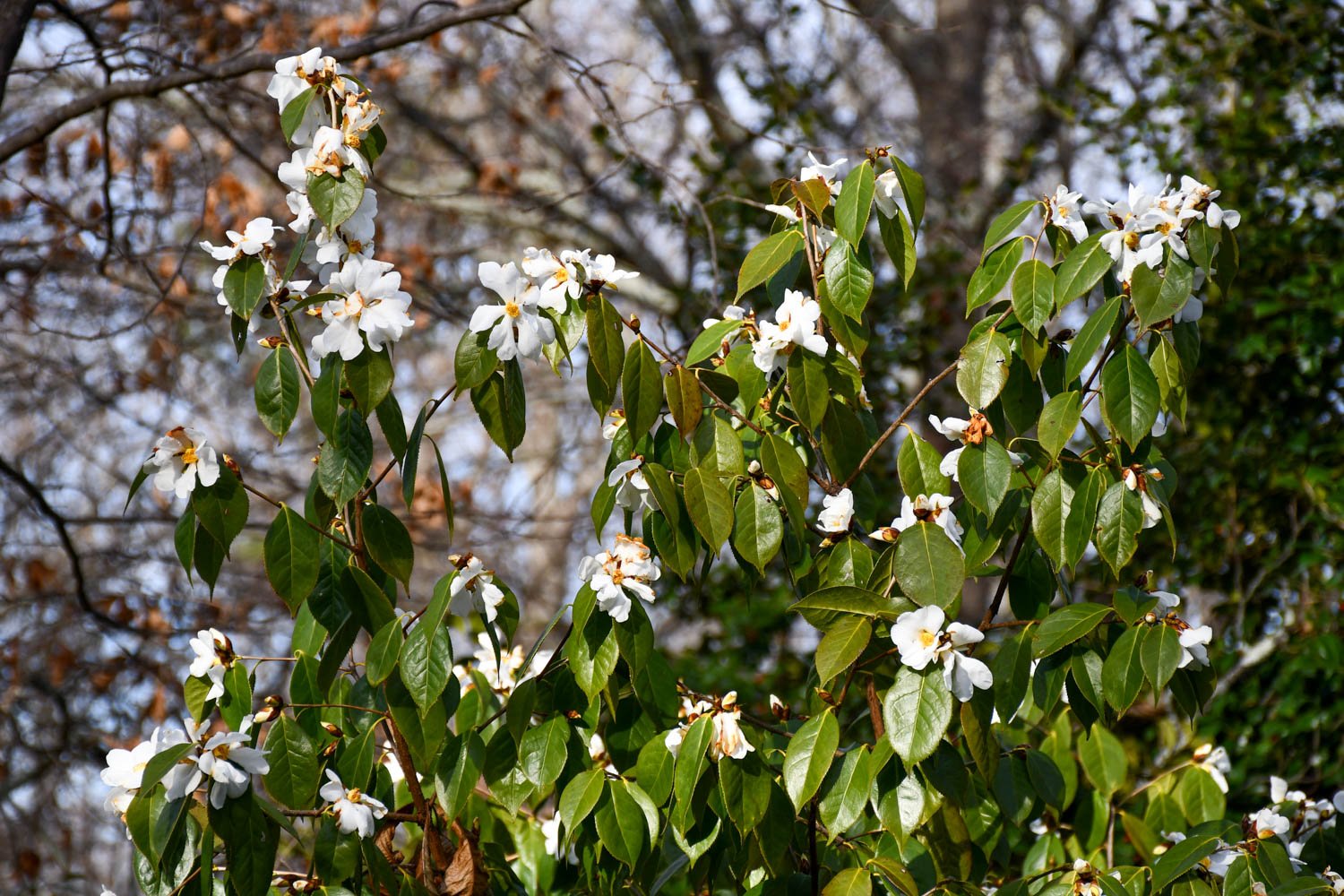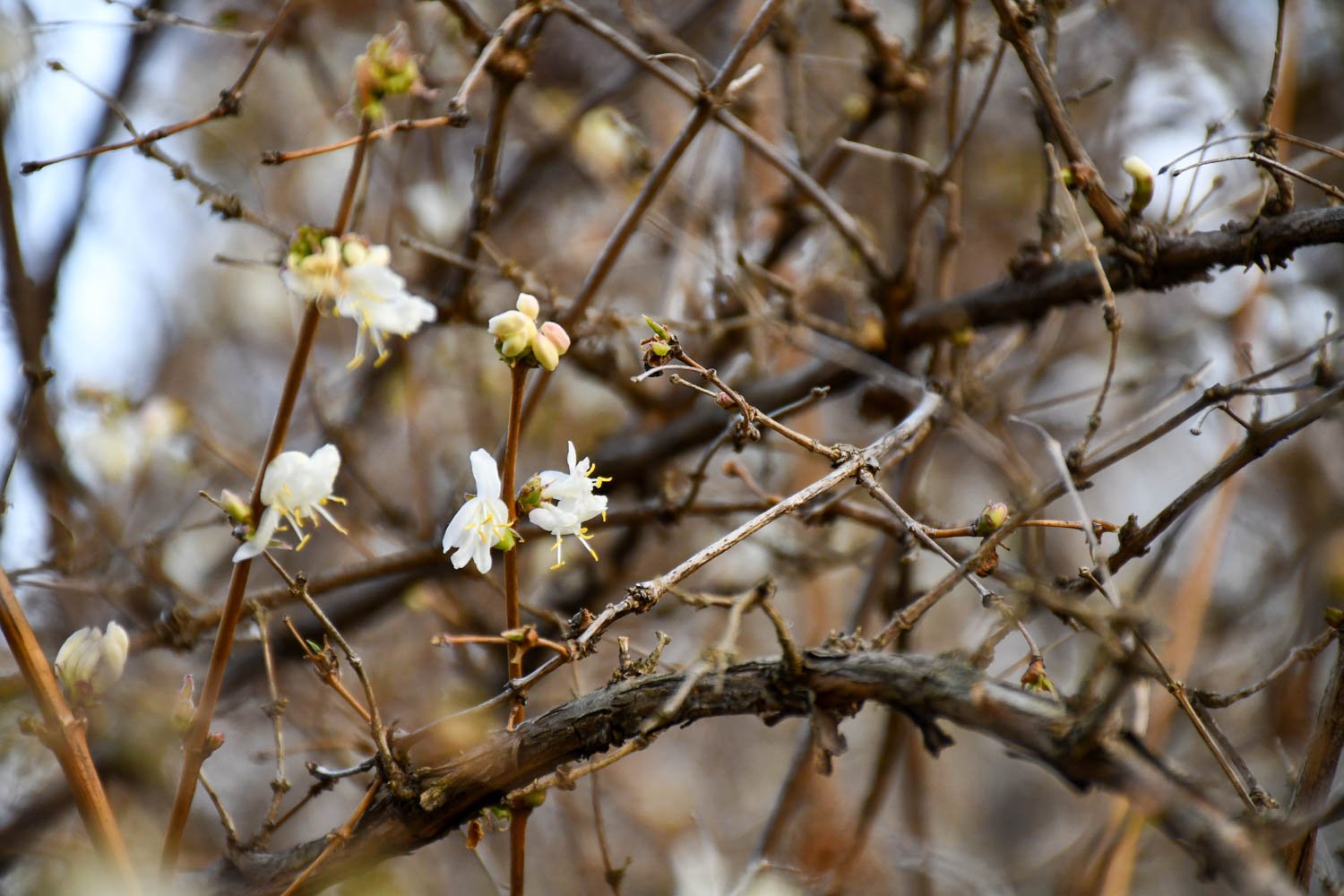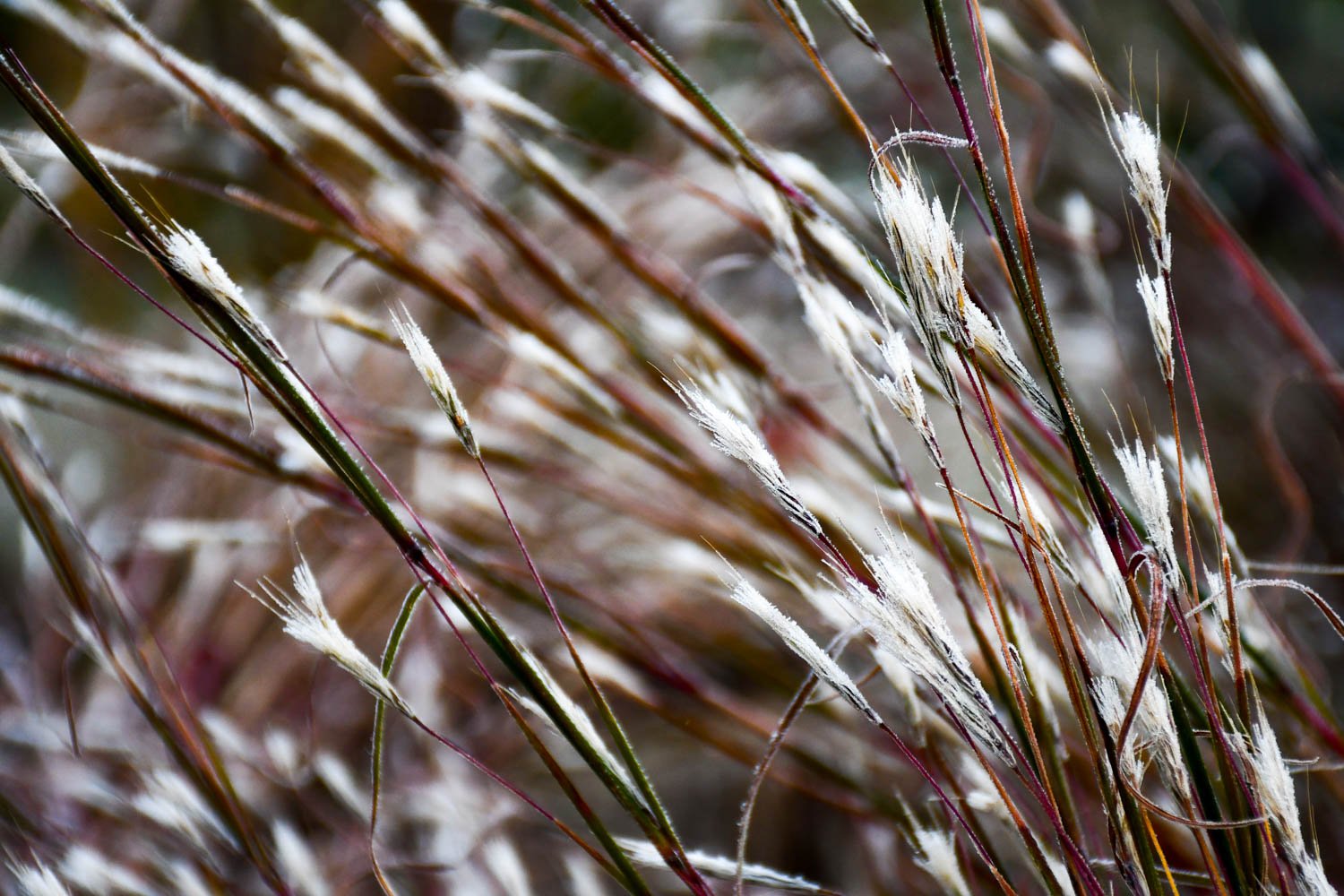The garden had looked glorious this spring, the best it’s ever looked really. Growth was burgeoning, and many plants were two-to-three weeks ahead of schedule due to the warm weather we had up to that point. The same day that we had the freeze my Day One app popped a photo up of March 19 last year, and the persimmons were not even leafed out. And, now, their already emerged leaves were limp and had turned a putrid green.
I had kidded with Karen that with the plantings looking so good it was time for something to go wrong. History has taught me that any time I’m proud of the garden there’s a flood, a boar, an armadillo, a drought, or some other disaster on the way. Pride goeth before the fall—and now the freeze.
I rallied once the sun came up, and I watched in bewilderment as most plants shrugged it off. Trillium ludovicianum (Louisiana trillium), Lupinus subcarnosus (sandyland bluebonnet), Penstemon digitalis (foxglove beardtongue), Phlox pilosa (downy phlox), Sporobolus heterolepis (prairie dropseed), Halesia diptera (two-wing silverbell), Spigelia marilandica (Indian pink), and more seemed unphased. It amazes me how we can drop below freezing and fully leafed out plants can survive.
But, I wasn’t taking any chances for the second night. I had gone into this cold snap thinking it would be a good learning experience. But, after seeing Baptisia alba (white wild indigo) that is such an anchor in my garden wilted and burned, I realized what a gut punch it would be to loose all of them. I’d have to wait an entire year to see flowers again.
So, right before sunset we set about covering up what we could. With 27°F predicted again that night, Karen and I scavenged anything that could potentially trap heat. Recycling boxes were brought from the garage, trash cans were flipped over, floating row cover was erected, pots and tubs were brought out, and sheets were placed over plants. I kidded with her before we headed inside that I liked my new garden art installation.
The next morning, a similar scene of water-soaked foliage and limp plants greeted me. I waited until the thermometer hit 32°F to begin uncovering plants, but a few hours later, most things defrosted from the cold yet again with little to no freezer burn.
Now, a week has passed, and I can safely say that most plants made it through the freeze well. The persimmons and peaches are gone, our Chionanthus virginicus (fringe tree) white flower show is now black, and my Baptisia sphaerocarpa (yellow wild indigo) lost some blooms. What possibly helped save us on most other plants was that were were cold approximately 36 hours before the freeze hit. Had we gone from 76°F to 26°F things might have been more dire. But, cold acclimation increases the sugars in plant tissues to make them more resilient to freezing.
I’m left wondering what can we gardeners do to prepare for events like this? My biggest concern is that data shows a warming trend with plant growth occurring earlier in the spring. I remember how terrible the April 2007 freeze was. Here’s a few thoughts.
CHECK AT LEAST THREE WEATHER FORECASTS. I like the National Weather Service, Time and Date 14 day forecast, and Carrot weather. I compare the three forecasts to get an idea of what to expect for the coming week. And, be prepared that it might dip lower than what is predicted. I recall reading where Johnny’s Selected Seeds said anytime the forecast showed a temperature below 42°F, they covered plants.
LEARN THE LAY OF YOUR LAND. Get an accurate hobby weather station and start learning how temperatures change across the lay of your land. Know where the frost pockets are, and where things tend to stay warmer. Also, compare your temperature with the local weather station to have an idea of what is predicted versus the actual temperature you experience on a regular basis.
PLANT DIFFERENT CULTIVARS. Various cultivars of the same species begin growth at different times. For example, many fruit trees have different chilling hours requirements that influence when they flower. My ‘Tropical Beauty’ peach is toast for the year because it had already formed fruit, but my ‘Sunraycer’ nectarine 20 feet away was just starting to bloom when the cold hit. So, it is best to plant a diversity of varieties to lessen the impact. Mark Diacono in A Year at Otter Farm warned that when gardening for food, anticipate 3 out of 10 crops each year will fail due to weather woes.
PLANT LATE EMERGERS. My Baptisia purpurea var. minor (dwarf wild indigo), Eutrochium fistulosum (hollow Joe Pye weed), and Amsonia hubrichtii (Arkansas bluestar) haven’t even emerged from the soil good yet. So, learn what plants are later to emerge if frost is a concern.
TRAP HEAT. I learned from my teenage days of extending the season that soil radiates heat that it absorbed during the day at night, and by covering it, I could trap some of that heat to keep plants above freezing. That’s why freezes are rare on cloudy nights, but occur frequently on clear nights below or near 32°F. If you cover plants, the cover has to be all the way to the ground. Otherwise, heat can escape. Eliot Coleman also noted in The Four Season Harvest that there is evidence that covering plants also helps to protect them from desiccating winds.
WATER BEFORE A FREEZE. If a plant is experiencing drier growing conditions, it can be more susceptible to freeze damage. Watering before a freeze can help to lessen the effect, and the water can help to absorb more heat during the day if done early enough. Also, water releases heat as it freezes from a liquid to a solid. My great-grandfather used to run sprinklers on his strawberry patch all night when a hard freeze was expected, and the energy released during phase change would keep the flowers and fruit just above freezing.
Whether you still have some frosts to go or you won’t see another freeze for eight months, I hope the tips and advice I shared above help you protect your plants from cold damage. And, your heart from sinking.













